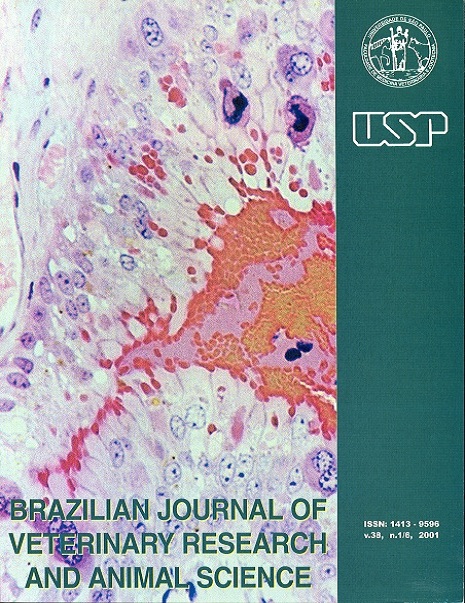Morphological analysis of the placenta of paca (Agouti paca L., 1766): Study with light microscopy and transmission electron microscopy
DOI:
https://doi.org/10.1590/S1413-95962001000500005Keywords:
Placenta, Morphology, Agouti paca, MicroscopyAbstract
Morphological aspects of the placenta of paca (Agouti paca, L., 1766) were studied by means of analysis with light microscopy and transmission electron microscopy of tissue samples corresponding to the portion of greatest placental connection of nine placentas in different pregnant females, in intermediary and final phases of pregnancy. We performed this study because there was, associated with the necessity of searching new specimen that might act as fine experimental models, the availability of this rodent in our environment. In the other hand, an improved knowledge of the reproductive aspects of these animals offers subsidizes to the establishment of rational raising centers of this species, since its preservation is necessary, besides the big commercial interest on its meat. The results showed that this rodent presents one vitelline and one chorio-allantoic placenta, which is a hemochorial and labyrinthine organ, histologically composed by lobules divided into three different portions: lobule center, labyrinth, and interlobule. In the lobule center portion the presence of arteries and veins was noticed, and in its peripheral portion there were two tubular systems set in a parallel way, where blood lacunas and capillaries were in close contact, constituting the labyrinth portion. Arteries and veins composed the interlobule. The main component of the placenta was the trophoblast, which independently from its site, presented a syncytio origin. Regarding the ultrastructure, the placenta barrier of paca was classified as hemomonochorial.Downloads
Download data is not yet available.
Downloads
Published
2001-01-01
Issue
Section
BASIC SCIENCES
License
The journal content is authorized under the Creative Commons BY-NC-SA license (summary of the license: https://
How to Cite
1.
Bonatelli M, Machado MRF, Cruz C, Miglino MA. Morphological analysis of the placenta of paca (Agouti paca L., 1766): Study with light microscopy and transmission electron microscopy. Braz. J. Vet. Res. Anim. Sci. [Internet]. 2001 Jan. 1 [cited 2025 Dec. 29];38(5):224-8. Available from: https://revistas.usp.br/bjvras/article/view/5875





